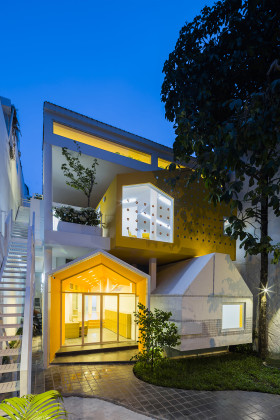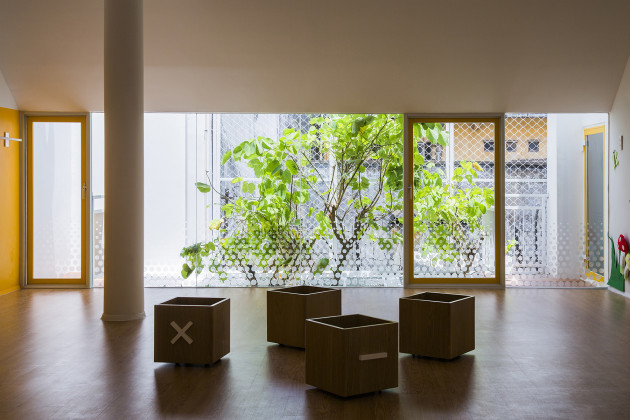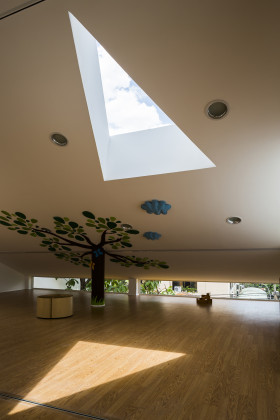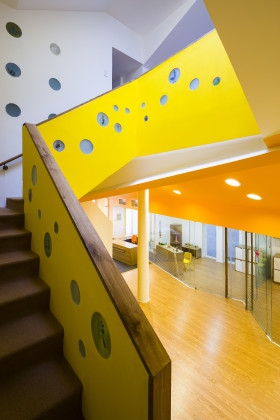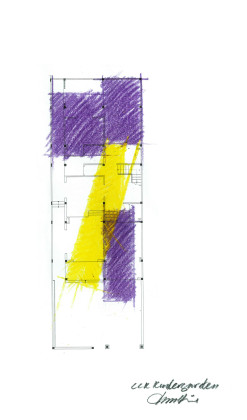The Landscape of Play
Drawing inspiration from traditional Vietnamese playscapes, Chuồn Chuồn Kim kindergarten encourage children to explore their surroundings and develop their personality naturally
The urban fabric in fast growing city is being stretched to its limits, new buildings rise, and old buildings are demolished or adapted to a new function. The adaptation of existing building is always accompanied by ambitious demands for function and aesthetic. Our mission is to convert the existing townhouse, while retaining its structural elements, into a vibrant and animated kindergarten.
Drawing inspiration from traditional Vietnamese playscapes, of which are easily found in children drawings but not in the setting of Saigon urban fabric. A typical shed roof house, an expansive rice field, a lush green forest…etc are simply a depiction of what a child is yearning for in a city. That is a place where children naturally feel more comfortable for it is related to their size, offering them a sense of safety and freedom to explore their surroundings. A norm can only be understood through the eyes of a child.
Inspired, and with a mentality to create a kinder"play"garden, the architects convert and organize each programmatic blocks to fit within a specific yet common building form-a shed. The idea is to create buildings (houses) within a building (house). At the same time, it is a positive respond toward the urban development of the city to create a contemporary architecture based on the long standing cultural & historical value of the place.
Chuồn Chuồn Kim kindergarten education program originated from the play-based education approach, of which encourage children to explore and develop their personality naturally. Children are sensitive the changes in their environment and they respond to the small little things happen around them with purest emotions. Hence, by providing a cluster of small spaces, the architecture stimulates and inspires the children to go out and discover the world in their own personal way. The flexible spatial organization is a direct respond to the programmatic requirement and the educational experience the architects want to offer.
The play gardens manifest themselves through the form of a shed, at various scales to allow children at different age, and height to interact and communicate with each other. Door and window opening placement, size and scale are purposefully considered to bring various shades of light and color into the space, fostering a closer connection with the natural surroundings. Confined within a limit space area, the outdoor spatial program provides a diversity of plants to offer an education opportunity for the school to increase children ability to feel the motion of the environment. By observing the changes in nature, children are encouraged to understand their ecological relationship to nature, and how their actions have an impact on the environment they live in.
 10.10.2016
10.10.2016




